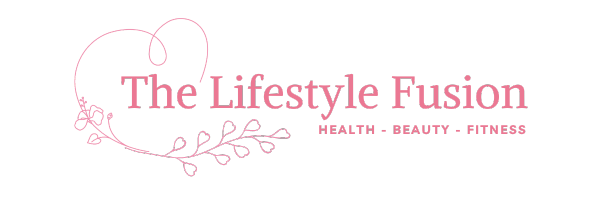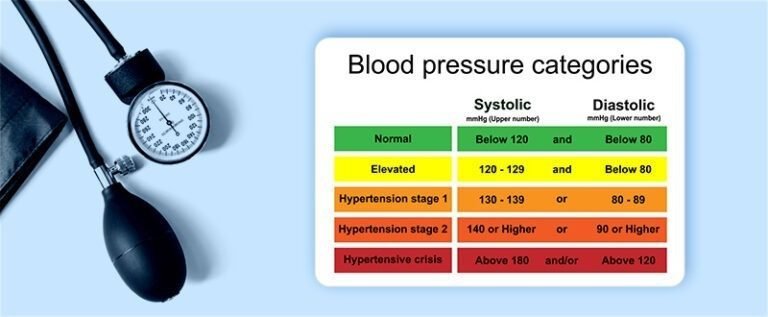The blood pressure chart is categorized in millimeters of mercury (mmHg) and is described as systolic and diastolic. The systolic pressure is the higher of the two and represents the pressure in the arteries when the heart beats. In contrast, the diastolic pressure is the lower value and represents the pressure in the arteries when the heart is at rest between beats. Blood pressure is generally measured in units of millimeters of mercury (mmHg).
There is the general classification of a blood pressure recording chart under study conducted by the American College of Cardiology (ACC) and the American Heart Association (AHA) guidelines including:
1. Normal
- Systolic: Less than 120 mmHg
- Diastolic: Less than 80 mmHg
Maintaining normal blood pressure is crucial for overall health and longevity. Normal blood pressure, typically defined as a reading below 120/80 mmHg, signifies a balanced cardiovascular system and reduces the risk of serious health complications. Within this optimal range, the heart can efficiently pump blood through the arteries without undue strain, promoting proper organ function. Adequate blood flow to the kidneys helps preserve their function, while the brain receives the oxygen and nutrients essential for cognitive health. Individuals with normal blood pressure are less likely to experience symptoms such as headaches and dizziness, contributing to an improved quality of life. Lifestyle choices, including a well-balanced diet low in sodium, regular physical activity, stress management, and limited alcohol consumption, play a pivotal role in maintaining blood pressure within the healthy range. Regular monitoring and prompt intervention, when necessary, are key components of a proactive approach to blood pressure management. Consulting with healthcare professionals for personalized guidance on lifestyle modifications and, if needed, medication, is essential to safeguarding cardiovascular health and preventing complications associated with hypertension.
2. Elevated
- Systolic: 120-129 mmHg
- Diastolic: Less than 80 mmHg
Elevated blood pressure poses a significant threat to overall health, as it can lead to various serious and potentially life-threatening complications. When blood pressure consistently exceeds the normal range, characterized by a reading between 120/80 mmHg and 129/80 mmHg, it puts excessive strain on the arteries and the heart. Over time, this heightened force can contribute to the development of cardiovascular diseases, including coronary artery disease, heart attacks, and strokes. Elevated blood pressure also increases the risk of damage to vital organs, such as the kidneys, and can contribute to the progression of kidney disease. Additionally, uncontrolled hypertension is a major risk factor for conditions like heart failure, peripheral artery disease, and vision problems. The impact of elevated blood pressure extends beyond the cardiovascular system, affecting cognitive function and potentially leading to cognitive decline and dementia. Recognizing the harmful consequences of elevated blood pressure underscores the importance of proactive measures, including lifestyle modifications, regular monitoring, and medical intervention when necessary, to mitigate these risks and promote long-term health. Seeking guidance from healthcare professionals is essential for tailored strategies to manage and reduce elevated blood pressure effectively.
3. Hypertension Stage 1
- Systolic: 130-139 mmHg
- Diastolic: 80-89 mmHg
In the blood pressure recording chart, Hypertension Stage 1, characterized by systolic blood pressure ranging from 130 to 139 mmHg or diastolic blood pressure ranging from 80 to 89 mmHg, signifies a condition that demands attention and intervention due to its potential health implications. At this stage, the elevated blood pressure places increased stress on the arteries and the heart, raising the risk of cardiovascular diseases. The higher pressure in the arteries can contribute to the development of atherosclerosis, where plaque accumulates and narrows the blood vessels, potentially leading to conditions such as coronary artery disease and heart attacks. Hypertension Stage 1 also heightens the risk of stroke, as the increased pressure can result in the rupture of weakened blood vessels in the brain. Additionally, this level of hypertension puts strain on the kidneys, potentially leading to kidney damage over time. Uncontrolled hypertension is associated with an increased risk of other complications, including vision problems, peripheral artery disease, and cognitive decline. Recognizing and addressing Hypertension Stage 1 is crucial to prevent the progression to more severe stages and mitigate the associated health risks. Lifestyle modifications and, in some cases, medication prescribed by healthcare professionals are essential components of managing and controlling blood pressure at this stage. Regular monitoring and proactive measures can contribute to better overall health outcomes and reduce the risk of complications associated with elevated blood pressure.
4. Hypertension Stage 2
- Systolic: 140 mmHg or higher
- Diastolic: 90 mmHg or higher
Hypertension Stage 2, characterized by a systolic blood pressure of 140 mmHg or higher and a diastolic blood pressure of 90 mmHg or higher, represents a more severe form of elevated blood pressure with notable disadvantages and increased health risks. At this stage, the elevated pressure in the arteries significantly raises the workload on the heart, leading to potential damage to the heart muscle over time. The risk of cardiovascular diseases, including heart attacks and heart failure, is substantially heightened. Additionally, the increased pressure can contribute to the development of atherosclerosis, narrowing the blood vessels and impairing blood flow throughout the body, increasing the risk of stroke. Hypertension Stage 2 places considerable strain on the kidneys, potentially leading to kidney damage and an increased risk of kidney failure. Other complications associated with this stage include vision problems, peripheral artery disease, and an increased likelihood of cognitive decline and dementia. Prompt and comprehensive intervention is crucial at this stage to prevent further escalation of health risks. Lifestyle modifications, such as dietary changes, regular physical activity, and stress management, are typically recommended, along with medications prescribed by healthcare professionals to help lower blood pressure. Regular monitoring and adherence to a tailored management plan are essential to mitigate the adverse effects of Hypertension Stage 2 and reduce the risk of severe complications. Seeking guidance from healthcare professionals is paramount for the effective management and prevention of complications associated with this level of elevated blood pressure.
5. Hypertensive Crisis
- Systolic: Higher than 180 mmHg
- Diastolic: Higher than 120 mmHg
A hypertensive crisis represents a severe and potentially life-threatening condition characterized by a sudden and significant increase in blood pressure. During a hypertensive crisis, blood pressure readings soar to 180 mmHg or higher for systolic pressure and 120 mmHg or higher for diastolic pressure. This critical state poses immediate and grave disadvantages to an individual’s health. The extreme pressure places an immense burden on the cardiovascular system, dramatically increasing the risk of cardiovascular events such as heart attacks and strokes. Elevated blood pressure can lead to acute damage to blood vessels throughout the body, impacting vital organs such as the heart, kidneys, and brain. Organ damage may result in heart failure, kidney failure, or neurological complications. Vision problems, including retinal damage, are also associated with hypertensive crises. Individuals experiencing a hypertensive crisis may exhibit symptoms such as severe headaches, shortness of breath, and chest pain, requiring urgent medical attention. Immediate intervention, often involving hospitalization, is necessary to rapidly and safely reduce blood pressure to prevent further complications. Intravenous medications may be administered under close medical supervision. A hypertensive crisis underscores the critical importance of regular blood pressure monitoring, adherence to prescribed medications, and prompt medical intervention for those with hypertension to prevent the progression to such dangerous levels and mitigate the potentially dire consequences.
In the end, as claimed by the blood pressure recording chart, the significance of maintaining a normal blood pressure level cannot be overstated for overall health and well-being. Normal blood pressure, typically defined as readings below 120/80 mmHg, is indicative of a well-balanced cardiovascular system, promoting optimal organ function and reducing the risk of severe health complications. Within this healthy range, the heart efficiently pumps blood without excessive strain, contributing to a lower risk of cardiovascular diseases such as heart attacks and strokes. Moreover, normal blood pressure supports kidney health, preserves cognitive function, and reduces the likelihood of other complications such as peripheral artery disease and vision problems. Embracing a healthy lifestyle, including a balanced diet, regular exercise, stress management, and limited alcohol intake, plays a crucial role in maintaining blood pressure within the normal range. Regular monitoring and timely intervention, when necessary, are key elements in preventing the progression of hypertension and its associated risks. By recognizing the significance of normal blood pressure levels and adopting proactive measures, individuals can safeguard their cardiovascular health and enjoy a higher quality of life.







